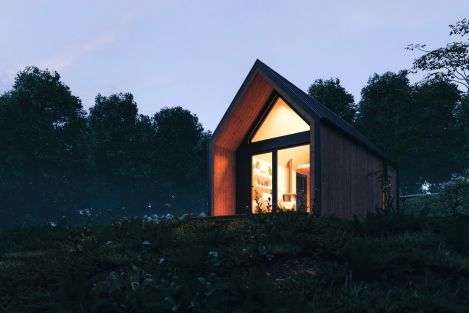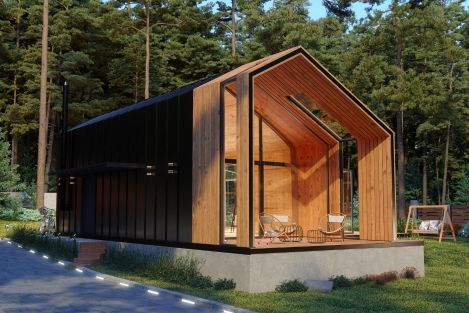
Written by Kayla Jane Barrie Updated on Feb 21, 2025 4 mins read

It is essential to consider insurance before building or buying a tiny house, and any property for that matter. This ensures you have adequate home insurance protection against damage from weather events and personal liability.
Insuring a tiny home can be complex because these dwellings often don't fit standard policies. If you're considering a tiny home in Ontario, here’s what you need to know to ensure it’s properly insured.
A tiny home is a compact living space, typically between 100 and 400 square feet, designed for efficiency and simplicity. These homes promote minimalism and affordability, allowing individuals to downsize and reduce expenses. Tiny homes can be built on permanent foundations or trailers for mobility.
When browsing for a tiny home, there are a few different options available. Here’s a glimpse into some of the options Canadians consider:

Yes, you can get insurance for a tiny home. The type of policy you choose will depend on how the house was built and whether it will be mobile or stationary. You may have several coverage options depending on how your tiny home is built and used:
The annual premium range for tiny home insurance generally lies between $400 and $1,500. However, this can vary significantly based on specific circumstances, including the home's construction materials, safety features, and local insurance regulations.
It is recommended that homeowners secure a policy that provides coverage equal to the home's replacement cost. This ensures that in the event of a loss, such as fire or theft, the homeowner can fully replace their tiny home and its contents without facing financial hardship.
The cost of insuring a tiny home in Ontario can vary significantly based on several factors:
By considering these factors, you can better understand the potential costs of insuring your tiny home. Each type has its own risks, leading insurers to treat them differently, impacting coverage types, costs, and requirements.
Yes, living in a tiny home in Canada is legal, but regulations vary by province and municipality. Key factors include zoning laws, building codes, and property bylaws. Compliance with these rules is essential for permanent residency.
Tiny homes can feel cramped, limiting storage and personal space. They may face zoning restrictions and lack access to utilities. Resale value can be unpredictable, and living in close quarters might strain relationships or require significant lifestyle adjustments.
In Canada, tiny home prices typically range from $50,000 to $150,000, depending on size, materials, and customization. DIY builds can cost less, while luxury options exceed this range. Additional expenses include land, permits, utilities, and transportation if mobile.
Tiny homes offer an innovative housing solution, but securing proper insurance is crucial to protect your investment. Working with an experienced provider can help you find the right coverage for your lifestyle, whether you’re building, buying, or renting. Insurance is vital for financial peace of mind, allowing you to enjoy your cozy, minimalist lifestyle confidently.
| Categories | Home |
|---|---|
| Tags | Home Coverage |
Read our insurance blog to get helpful tips, information and news.
Has your car been totalled in an accident? Is your car a write off? Learn about vehicle write offs for a total loss insurance claim.
Get the facts on Toronto's auto theft problem. We break down the data, reveal the most-stolen vehicles (including the Honda CR-V and Lexus RX 350), and show which neighbourhoods are most affected.
Dive into the world of auto theft with our blog on the most stolen cars in Canada. See the most stolen cars across Canada, including provincial lists for Ontario and Quebec, and learn how high-risk models can affect your car insurance premiums.
Drive safe this winter! Check out these tips for driving in snowy and icy conditions in Ontario. Get other helpful info and FAQs on winter driving.